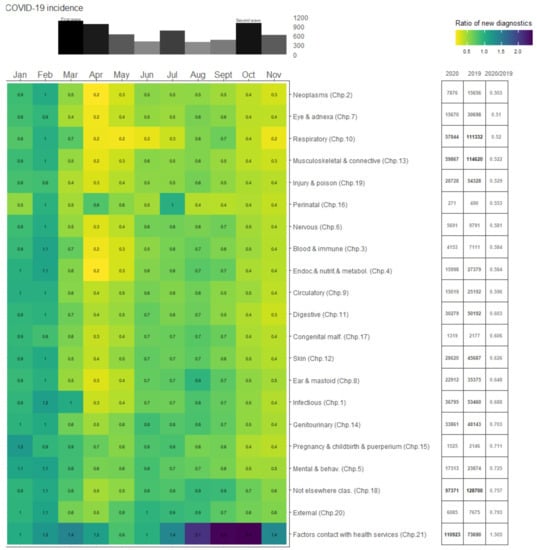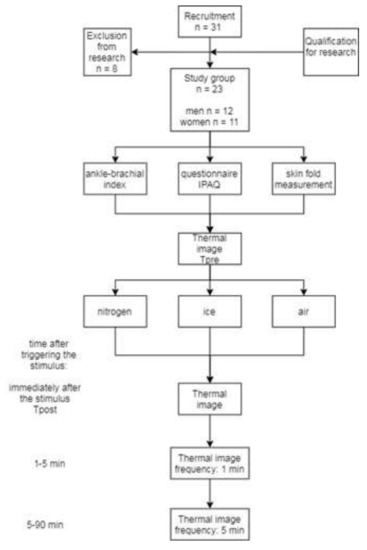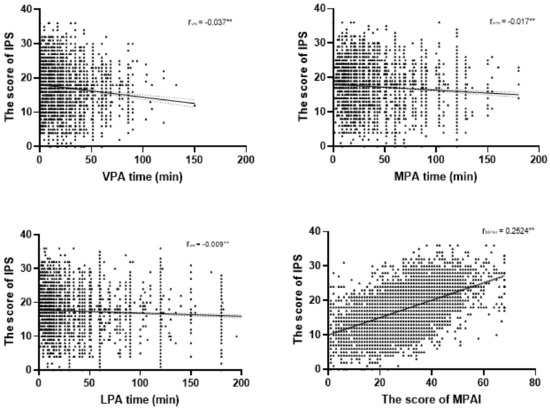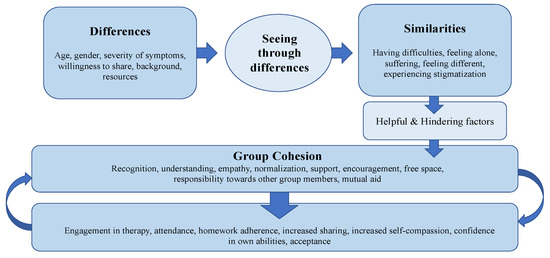Int. J. Environ. Res. Public Health 2021, 18(10), 5335; https://doi.org/10.3390/ijerph18105335 - 17 May 2021
Cited by 39 | Viewed by 6134
Abstract
The COVID-19 pandemic has had major impacts on population health not only through COVID-positive cases, but also via the disruption of healthcare services, which in turn has impacted the diagnosis and treatment of all other diseases during this time. We study changes in
[...] Read more.
The COVID-19 pandemic has had major impacts on population health not only through COVID-positive cases, but also via the disruption of healthcare services, which in turn has impacted the diagnosis and treatment of all other diseases during this time. We study changes in all new registered diagnoses in ICD-10 groups during 2020 with respect to a 2019 baseline. We compare new diagnoses in 2019 and 2020 based on administrative records of the public primary health system in Central Catalonia, Spain, which cover over 400,000 patients and 3 million patient visits. We study the ratio of new diagnoses between 2019 and 2020 and find an average decline of 31.1% in new diagnoses, with substantial drops in April (61.1%), May (55.6%), and November (52%). Neoplasms experience the largest decline (49.7%), with heterogeneity in the magnitudes of the declines across different types of cancer diagnoses. While we find evidence of temporal variation in new diagnoses, reductions in diagnoses early in the year are not recouped by the year end. The observed decline in new diagnoses across all diagnosis groups suggest a large number of untreated and undetected cases across conditions. Our findings provide a year-end summary of the impact of the pandemic on healthcare activities and can help guide health authorities to design evidence-based plans to target under-diagnosed conditions in 2021.
Full article
(This article belongs to the Special Issue Primary Healthcare)
►
Show Figures











